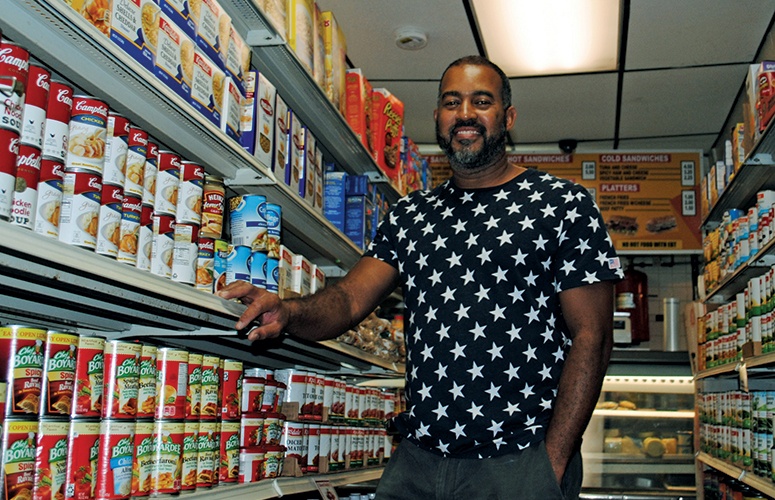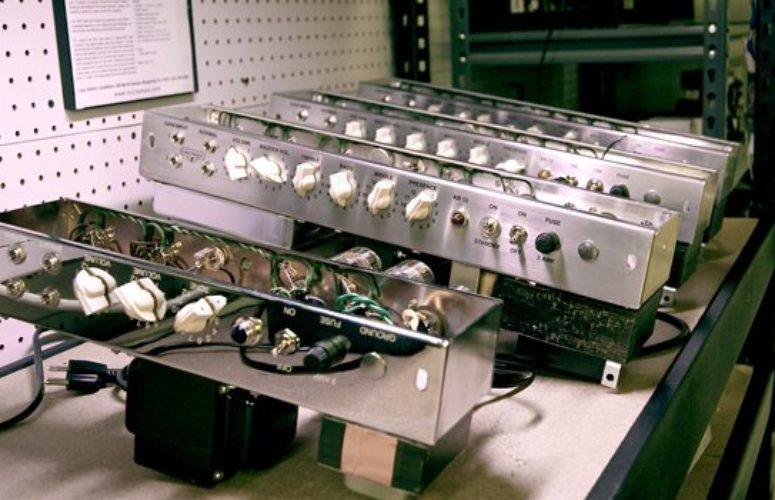
How Government-Backed Loans Help Small Businesses
Well-positioned firms will find money is available, but it pays to be prepared and talk to one’s banker.
By Colleen O’Dea, Contributing Writer On Apr 8, 2019With the economy continuing to grow and confidence high, now is a good time for small businesses that have been considering an expansion, or entrepreneurs looking to start a new endeavor, to take the plunge. New Jersey banks, partnering with the US Small Business Administration (SBA), are in a good position to provide the funds needed to grow a firm, increase its inventory or refinance its old debt and boost profits.
Money is available for those businesses in a good financial position and individuals with a strong business plan: The SBA loaned a record $905 million to nearly 2,300 New Jersey small business owners during the 2018 fiscal year, which ended September 30.
“There is no doubt that an improving economy has translated into more loan dollars for New Jersey entrepreneurs to start, grow and expand their small businesses across the state,” Al Titone, SBA New Jersey district director, says. “With small business confidence at an all-time high, small business owners are taking the money generated with the increased growth, and are reinvesting it back into their businesses.”
According to Titone, the increase in lending reflected an increase in larger investments like equipment and real estate, “where even with good credit, a small business may still need help.”
The average SBA loan was for $397,000 in 2018, an increase of $23,000 over the prior year. SBA loans helped to create 7,816 jobs and retain another 9,397 jobs throughout the state. Roughly 6 of every 10 loans went to start-ups.
“As belief in the economy gets better, it opens up opportunities for people who maybe had been thinking about venturing out on their own,” says Bob Young, senior vice president and Central New Jersey market manager for PNC Business Banking, adding that technology startups have “mushroomed” over the last few years and will likely continue to proliferate in the future.
From Oct. 1 through Feb. 15, the SBA had already loaned almost $328 million to 707 small businesses and had assisted firms in every county. Restaurants got the most loans – 74, worth almost $40 million – followed by fitness and recreational sports centers and liquor stores. The largest average loans, $1.37 million, went to 13 day care centers.
“Businesses always seem to have needs; they are always trying to grow,” Matthew Flannery, senior vice president at Provident Bank, says, noting that SBA loans are particularly popular for those seeking franchise opportunities. “Now is a good time. The economy is good. There are a ton of lenders out there, a ton of competitors. That’s better for borrowers.”
A good economy is not a prerequisite for a business expansion, says Hilda Kong, SBA solutions manager for JPMorgan Chase Business Banking.
“We’re always having discussions with current and prospective clients about their business goals and their financing needs,” Kong says. “Small business growth is important regardless of the economic cycle and we want to be on this journey with business owners. There is never a time we’re not getting inquiries from entrepreneurs looking for capital to start, grow or expand their business.”
While lending is up, a business owner or entrepreneur still needs to do homework to have the best chance of getting funds. The first step is to create a detailed business plan to take to a bank. This helps inform the discussion about financing needs and options and determine how much funding one needs.
Bankers have other tips.
“Businesses should have up-to-date and prepared financial statements,” says Giuseppe Mastroeli, group vice president for business banking at M&T Bank, which was the second largest small business lender in New Jersey based on total SBA loans last year. “Be prepared to talk about your business and answer questions about your future needs. We like to develop relationships with our clients and that starts by having a good, open dialogue so we can understand your business and determine how we can provide the best financing and technical expertise to help your business succeed.”
“Your plan not only needs to outline your business goals and objectives, but also needs to describe how the loan will be used and eventually repaid,” Kong advises. “Most importantly, speak with a business advisor.”
Says Flannery, “It’s always good to know what your strengths and weaknesses are. Get everything out there. Banks don’t like surprises.”
It’s helpful for borrowers looking for financing to familiarize themselves with the different types of loans available. SBA loans have remained virtually unchanged for years.
The primary loans provided are through the SBA’s 7(a) Loan program, according to Titone. These can be used for many purposes, including to buy real estate or inventory, refinance business debt, or purchase a small business. The maximum amount is $5 million and terms can vary according to the purpose of the loan. Generally, loans for real estate can carry up to a 25-year term, while other fixed asset and working capital loans can carry up to a 10-year term.
Under the 7(a) Loan program, the SBA also offers revolving lines of credit under its CAPLines (for short-term and cyclical working capital needs), SBA Express Loan (for amounts up to $350,000) and Export Working Capital Loan programs.
The 504 Certified Development Program provides loans predominantly for fixed assets, such as machinery and equipment, or for purchasing a building and land for a business or to build a structure/facility. It differs from a 7(a) loan in that the SBA teams up with an Certified Development Company that finances 40 percent of the total project and brings in a third-party lender to finance 50 percent, with the borrower usually investing the rest. One significant change to this program, made in 2017, allows borrowers to refinance debt.
Two other SBA loan products include Community Advantage, which provides loans of up to $250,000, and microloans, which are typically less than $50,000.
Last year, the SBA New Jersey district office approved 38 Community Advantage loans for $5.3 million. Titone tells the story of how an SBA Community Advantage loan helped Casey’s Supermarket, a small neighborhood grocery store owned by Jenny and Winston Rodriguez in the heart of Newark’s South Ward.
In 2015, nine years after starting the store, the couple purchased the building/property where the business is housed. What they thought was a good deal, however, turned out to be a high-interest loan that saddled them with a mortgage that was cutting into their profitability. And they used a credit card to make improvements to their store.
Seeing that their monthly payments were just covering interest, the Rodriguez’s sought help. Through the SBA, they were able to get a $250,000 Community Advantage Loan to refinance their mortgage and credit card debt and secure an additional $13,000 in working capital.
“SBA’s Community Advantage is designed to meet the credit, management, and technical assistance needs of small businesses in underserved markets,” Titone says. “The impact of that loan gave the Rodriguez’s the lifeline they needed to continue their business. But more importantly, it assured the community that Casey’s Supermarket will remain a vital part of their lives and neighborhood for years to come.”
While not a loan itself, Lender Match (www.sba.gov/lendermatch) is a relatively new SBA tool that matches borrowers with lenders. Its popularity has been growing as more entrepreneurs and small business owners seek quicker access to answers about potential financing and lenders, according to Titone.
“The idea is to always be thinking of streamlining and simplifying whenever possible, when it comes to giving entrepreneurs access to capital,” he says.
Discussions with a banker are a critical part of the process because not all loans are created equal. The advisor will know which loan options are available, and best, to fill a specific lending need. For instance, a conventional loan or a line of credit is better for those who qualify.
Typically, SBA-backed loans are best for businesses that would not normally qualify for under conventional commercial lending requirements. SBA programs tend to offer longer amortizations, favorable pre-payment terms, and financing at reasonable terms and conditions.
“The SBA criteria for securing a small business loan are less stringent than a conventional loan from a commercial lender, and the terms of the loan are much longer than a bank loan,” Titone says. “Longer terms don’t put as much financial stress on a small business owner, allowing them to receive a lower monthly loan payment and helping to free up cash flow.”
“These programs provide another source of capital to help people start and grow their business,” Mastroeli says. “The SBA loan guarantee is essentially another form of collateral for the applicant and it’s a strong credit enhancement to help increase the likelihood of your loan application being approved for financing.”
But it’s not for all businesses looking for funds.
“An SBA loan is only one option,” Young says. “The solution really needs to fit the client. Maybe they want to put a little more down, maybe they want to make the payoff sooner. This is where the whole conversation comes into play: What are the advantages, as well as what might the obstacles be?”
Kong agrees, “We provide access to various capital solutions, including conventional financing and a number of SBA programs, and will work with a client to find a solution that best fits his or her needs.”
She says Chase, in addition to offering SBA products, has developed several other programs to address gaps in traditional funding: “We’ve committed $150 million to our Small Business Forward program, which supports our veteran-owned small businesses, as well as two special programs supporting women and minorities. Our Women on the Move program will extend $10 billion in credit to women-owned businesses over the next three years, and Advancing Black Pathways builds on the firm’s existing efforts helping African Americans achieve economic success.”
But there’s a benefit for banks to offer SBA funding, too. The SBA guarantees between 50 percent and 90 percent of the loan, enabling the bank to lend to businesses that might otherwise be considered too risky. Offering SBA loans also helps banks continue to provide a full range of services to customers, rather than having to send some owners away to find a loan from another source.
“They allow us to help customers who would have been declined or sent elsewhere,” Flannery says. “Instead of losing the customer, we can keep the relationship we had. It’s never good to tell existing clients, ‘no, we can’t help you.’”
“It does give us that avenue to do more lending,” Young says. “It opens up avenues of capital to them.”
He adds that a discussion about a loan is also a good time to “look at the entire customer” and reassess all their other financial products to help improve their bottom line.
“There are a lot of ways they can manage their businesses through technology that banks can offer,” Young says. “How do they manage their money? How do they process credit cards? We can help them be more efficient. It helps their cash flow. It’s good to know your banker.”
“SBA programs enable us to fulfill our commitment to providing access to capital for more business owners,” Kong agrees. “They also give us the opportunity to build relationships and provide business and personal financial solutions. We’re able to offer more programs and initiatives to make an impact and strengthen local communities.”
Given the various options available both from the SBA and through other bank products, healthy businesses with a well-thought out plan need not worry too much about not being able to qualify for some financing, Mastroeli says.
“For businesses that have a good business plan, strong fundamentals and a need for financing, M&T and other banks in the community are always looking to serve more clients,” he says.
To access more business news, visit NJB News Now.
Related Articles:





